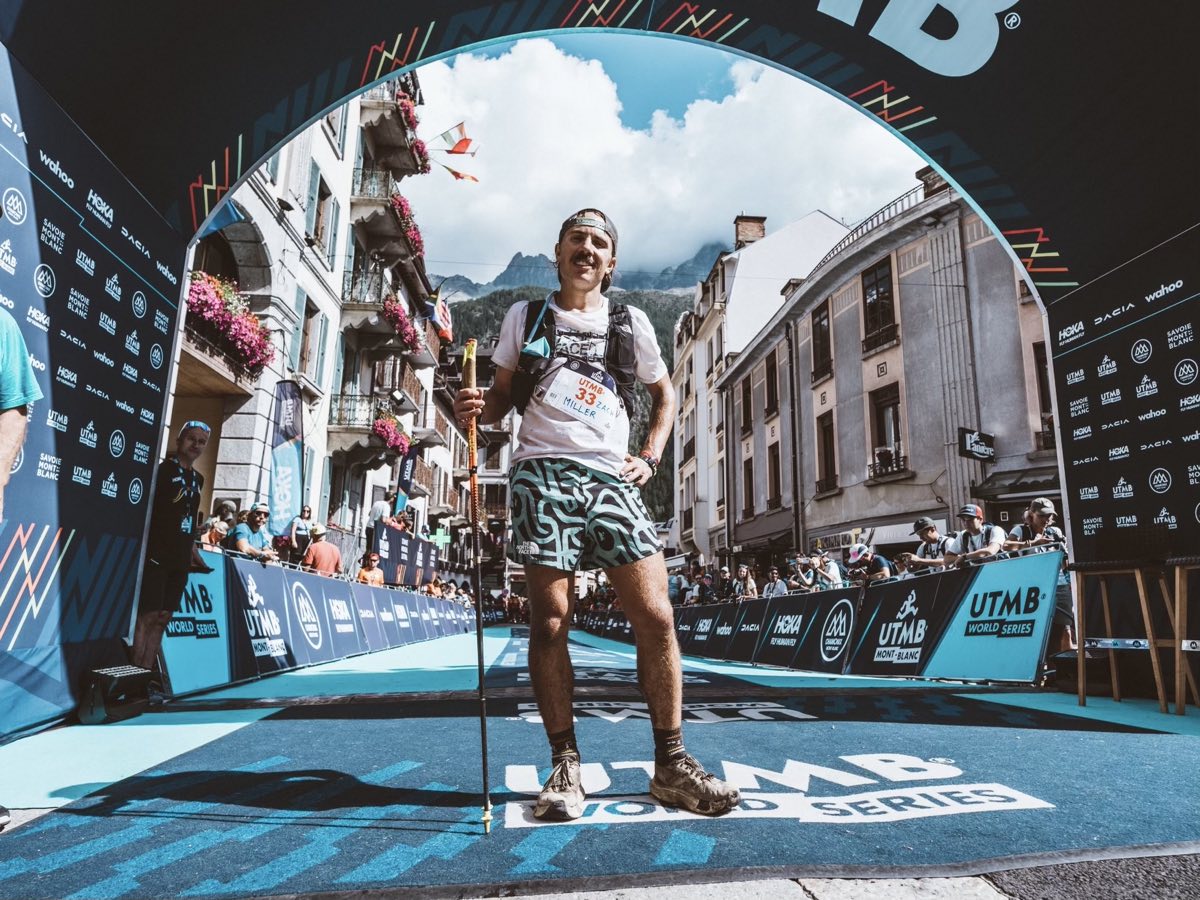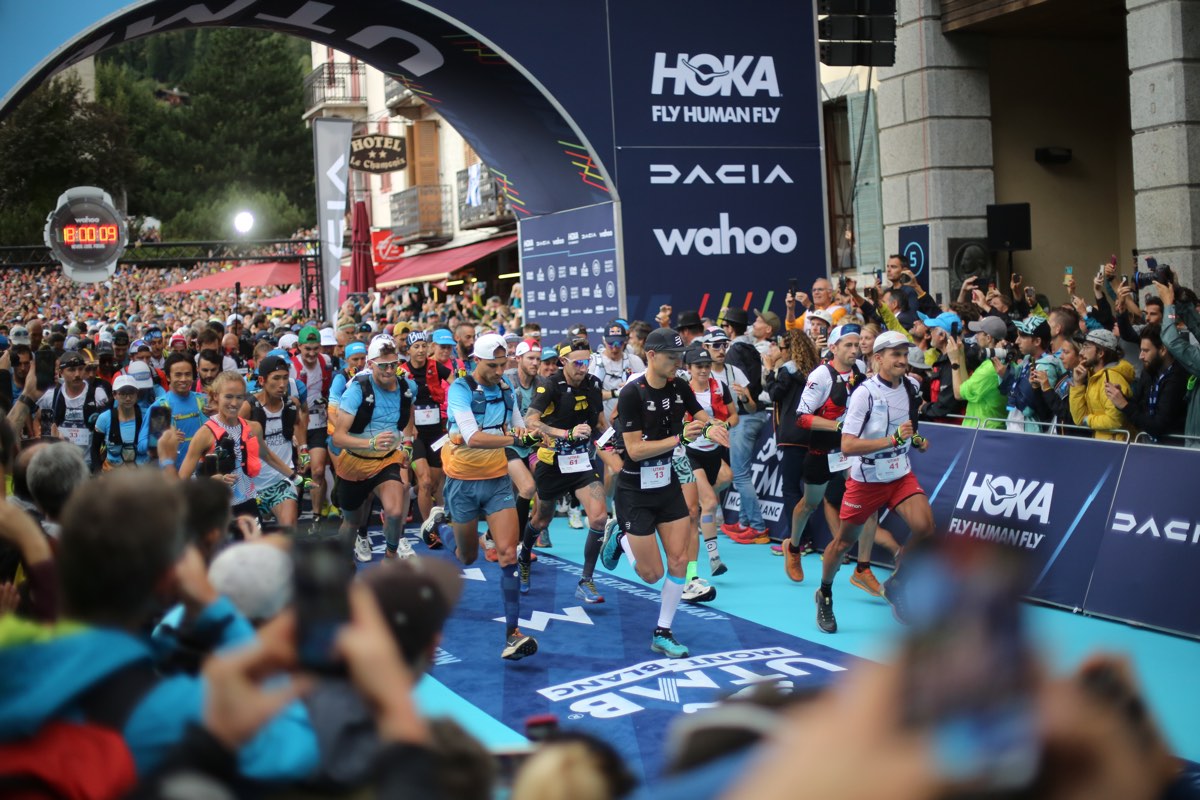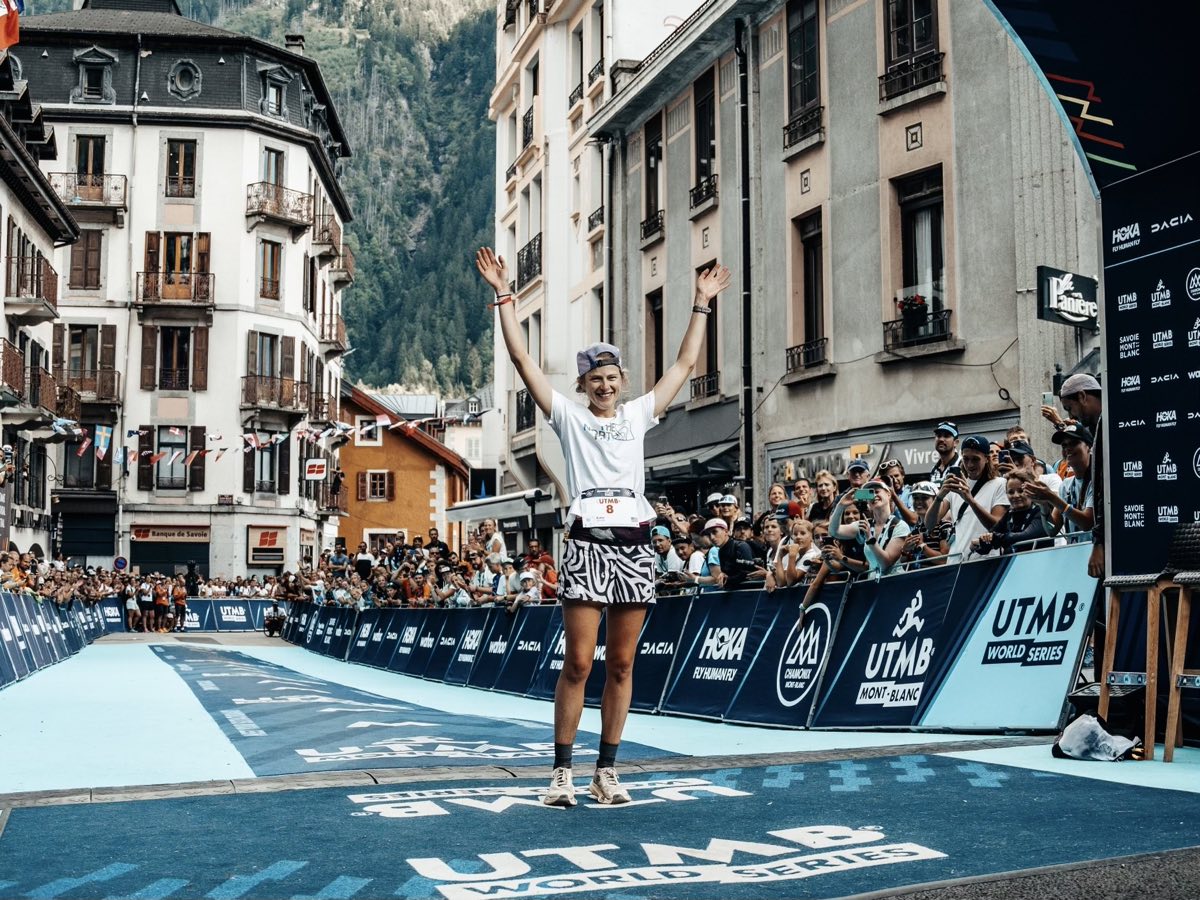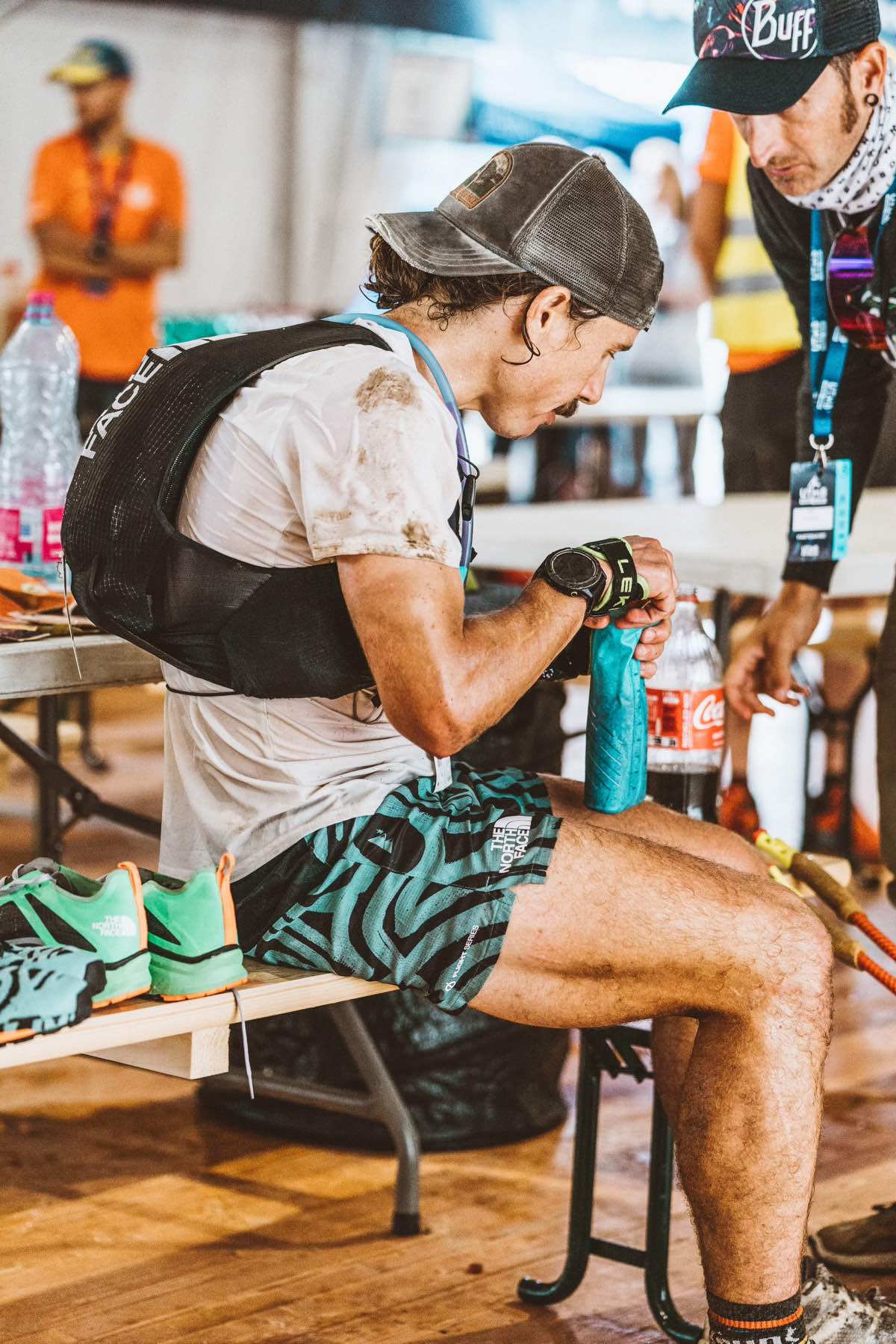So, you want to run UTMB, or one of the other races at the UTMB Mont-Blanc festival? Great! Join the club. But be forewarned, it’s a big one.
Big for good reason, though. Big because the course, the fans, and the competition are amazing. Big because year after year, elite runners from around the world flock to the start lines. Big because thousands of amateurs join them. Big because the races have live coverage that gets broadcast worldwide. Big because the media and sponsors flock to it. And big because it’s a party — one big, internationally known, mountain running party.
Surprisingly though, the party is still pretty young. It would be easy to assume that a race of such size and prestige would be one that has been around for many years, but that is simply not the case. Though it may look like a full-grown adult, UTMB is really in more of its teenage years, and as is so common to that stage of life, there are some growing pains.
For those wanting to take part in UTMB, the growing pains can certainly be uncomfortable. I’ve been participating in the races since 2015, and it feels like every year something changes. With the recent merger with the Ironman Group and the launch of the UTMB World Series structure, this year has been no different. In fact, the current changes seem to be the most drastic that I have seen yet. At times it can feel hard to keep up.
In my next few paragraphs, I will attempt to lay out a sort of road — or trail — map for those struggling to get a handle on the latest UTMB qualification structure, and also aim to generate a conversation about the plusses and minuses of the latest evolution of this much-loved race.
So How Does This New System Work?
Well, that depends on how you wish to qualify. There are three main qualification processes — one for amateurs; one for the elites; and one for, as the UTMB website states, “runners with priority.” I’ll start with the amateurs.
Amateurs
In the past, the system for amateurs was fairly simple. Runners would gather UTMB points by running UTMB qualifying races, of which there were many. You would collect these points within a certain number of races, meaning you couldn’t just run tons of short races to get the points, but rather you had to score all of the necessary points within the established number of races (i.e., three or fewer). Some races scored more points than others, so you had to be strategic with your race selections. Once you had those points, you could then enter the lottery. If your name was drawn, you got in, if it wasn’t, you didn’t.
The new system is fairly similar, but it also has some distinct differences. According to the information published by UTMB, there are two things you need to enter the lottery for the races in the UTMB World Series Finals (UTMB, CCC, and OCC). These two things are at least one Running Stone and a valid UTMB Index.
The Running Stone must be collected within the previous two years. You can get a stone by finishing a 20k, 50k, 100k, or 100-mile race on the UTMB World Series circuit. It’s similar to the old points system, but here’s the difference. One, you are limited to using races on the UTMB World Series as qualifiers. And whereas before where you needed a number of points to enter the draw, you now only need one stone. However, each stone you have gives you one ticket in the lottery. Hence, six stones give you six tickets, meaning you have a better chance of being selected.
Once you have your stones, you need to make sure you have a valid UTMB Index. The UTMB Index has four categories: 20k, 50k, 100k, and 100 mile. You obtain an index simply by running races on this list. You do not need an index of a certain level, meaning finishing faster doesn’t give you an edge. You simply need to have an index within the appropriate category.
For OCC, you need an index in at least the 20k category. For CCC, you need an index in at least the 50k category, and for UTMB you need an index in the 100k or 100-mile category. Finally, your UTMB Index must be acquired in the past two years. To put it simply, finish a UTMB series major, event, or series race of the appropriate distance (and within two years beforehand) and you’ll have your index requirement.
Once you have both your index and your stone(s), you can enter the lottery. As per the old system, you can enter the lottery for just one race, meaning you can’t enter for UTMB, CCC, and OCC all at the same time.
Groups
Now you can also enter as a group. To enter as a group, you put all of your names in together, but the maximum number of stones you can use per person is the minimum number of stones owned by any one member of the group. If you and two friends want to enter together and you have five, four, and three stones, respectively, then as a group you can each enter three stones.
Elites
In the past, elites had to collect qualifying points like the amateurs. However, once they had their points, they could bypass the lottery and be granted an elite entry if their International Trail Running Association (ITRA) Score was high enough. This process was relatively simple and made it possible for lots of elites to take part in the UTMB races. In my opinion, this was a great thing because it made for deep, competitive race fields, which in turn made for exciting races.
The new process is much different. With the UTMB World Series structure now in place, elites must race their way into the series finals (OCC/CCC/UTMB). To do so, they must place in the top three at any UTMB World Series event, or in the top 10 at any UTMB World Series Major.
Of course, this is all broken down by category — meaning 50k events/majors will qualify runners for 50k finals (OCC), 100k events/majors will qualify runners for 100k finals (CCC), and 100-mile events/majors will qualify runners for 100-mile finals (UTMB).
But, what about the runners who finish on the podium at the previous year’s UTMB World Series Finals? Well, that is yet another way to qualify, as the top three finishers at the finals will qualify for the next year’s finals so long as they participate in another UTMB World Series race. They do not have to finish on the podium in this race, but they do have to participate. So yes, this means that if Katie Schide, Kilian Jornet, or any of the other top three finishers of 2022 wish to run in next year’s UTMB, they must first participate in another UTMB World Series race.
Additionally, runners also have a chance of making it into the finals even if they do not finish in the top three at an event or top 10 at a major. This can happen if the runners who earn those qualifying spots refuse to take them. Any such unused spots will be passed down to runners who have finished a series event or major within the past year. These spots will be distributed according to your UTMB Index, with the highest index scorers getting first dibs.
Age Category Ranking
Should you fail to qualify via the process detailed above, you have yet another option. This is qualification via age category ranking, which only applies to UTMB World Series Majors. Each major will have 55 qualifying spots set aside for age category finishers. Each age category that is represented will receive at least one qualifying spot in the finals, with the additional spots being allocated based on the number of runners in each age group.
Runners With Priority
Finally, this brings us to the last remaining way of qualifying, the “runners with priority” method. This grouping consists of charity/health/environment/partner entries, and rollovers from 2021 — when international athletes were allowed to roll over their entries to 2022 or 2023, without needing to collect stones.
Runners with access to these charity/health/environment/partner bibs can enter so long as they have collected at least one Running Stone in the past two years and have obtained a valid and up-to-date UTMB Index for the category in which they wish to participate.
This concludes the entry process for OCC, CCC, and UTMB. But, what if you are interested in TDS, PTL, MCC, ETC, or YCC? Well, those races are governed by yet another entry process and for the sake of this not getting much longer, I will simply direct you to the UTMB website.
Reflecting on the Changes
With that, I can breathe a sigh of relief. Relief because that was a lot of typing, and a lot of information to sort through. To be honest, it’s not very exciting stuff. Why bother to write about it? Well, for one, I write it in the hope that I can help people understand how the new UTMB system works. But, more importantly, I write it because I think there is a lot to think through here with regard to not just the future of UTMB, but also the future of ultrarunning and mountain running in general.
When I look at a system like this, I find myself asking some big, important questions. Things like, what is the purpose of it? Does it help trail running and ultrarunning grow in a positive direction? Does it help UTMB grow and maintain its prestigious status? Is it in the best interest of future generations of trail runners? Is it fair? Is it good for the environment? Is it healthy for the runners? Does it allow races outside of the UTMB system to thrive? Does it threaten to create a monopoly? Does it make our sport better?
For amateur runners, one big concern is the fact they can increase their chances of being selected in the lottery by collecting more stones. Is this a good thing — as it means for those who dream of running UTMB, it is more within their control to make it happen, rather than relying on the gods of the lottery entry? Or does the system overly favor the wealthy, who can afford to travel to and enter more races?
For elites, the big change is the need to qualify via a fairly select group of UTMB World Series races. Is this good in that it could potentially create a competitive series of events that is fun for people to follow? Or, does it threaten to make the UTMB, CCC, and OCC fields less competitive if elites choose not to play into the new system? If the elites do choose to play along, will it make other non-UTMB races less competitive or lead to burnout of athletes trying to do too much?
The list could go on and on, but these are the questions that come easily to my mind. UTMB is an incredible race. And to me, trail running is not just a sport, but a way of life. I would like for both this race and this sport to continue to thrive. For this to happen, I think it is important to keep things in check.
Change isn’t necessarily a bad thing. In fact, it is often a good thing, but it is at times of change like this that it is important to step back and ask the big questions. Like where is this all going, and is that a place we want to end up? So, tell me, what do you think?
Call for Comments
- What are your thoughts on the new entry process, and its knock-on effects on our sport?
- Do you still have questions or do you think it’s clear now?




